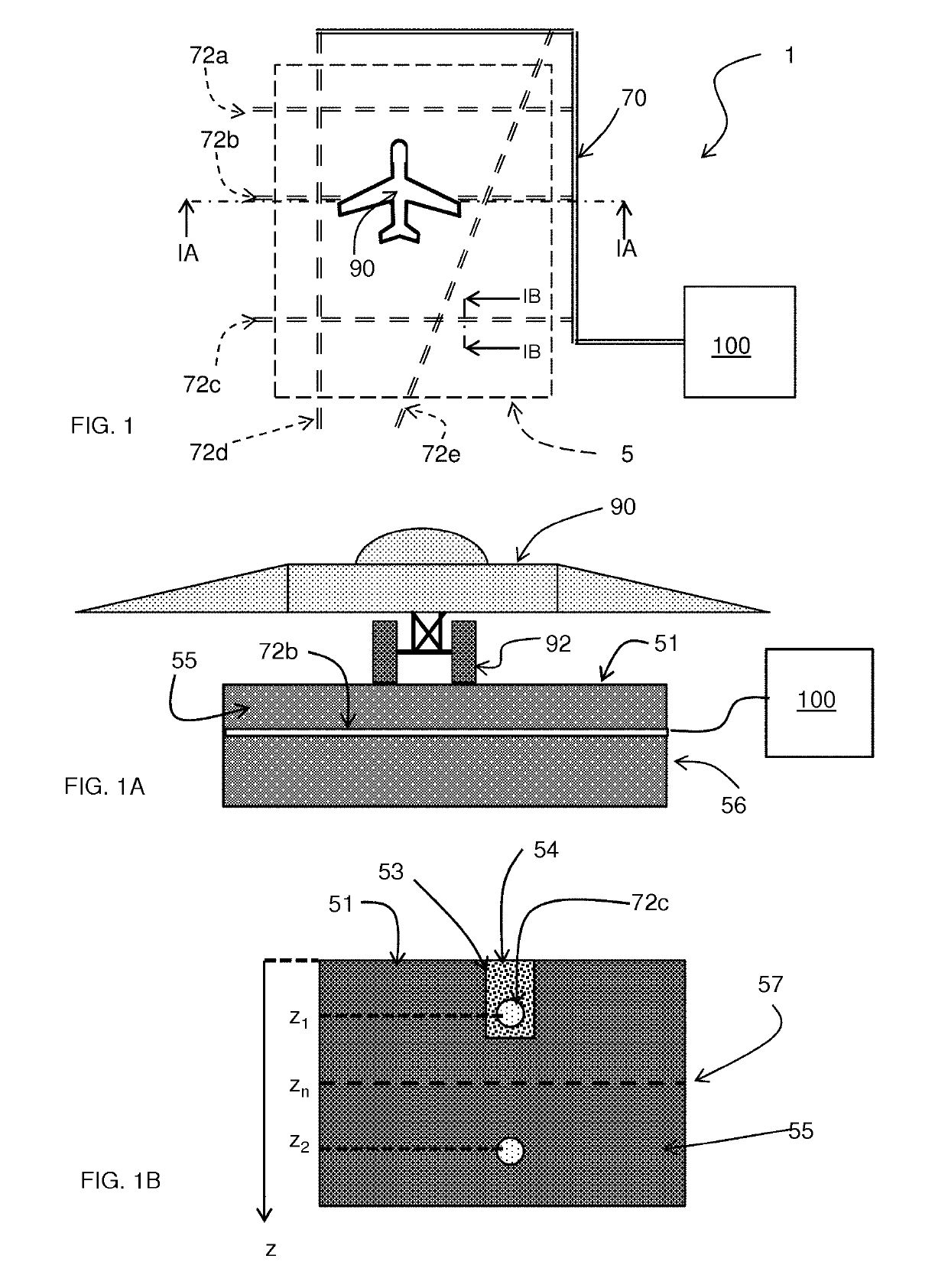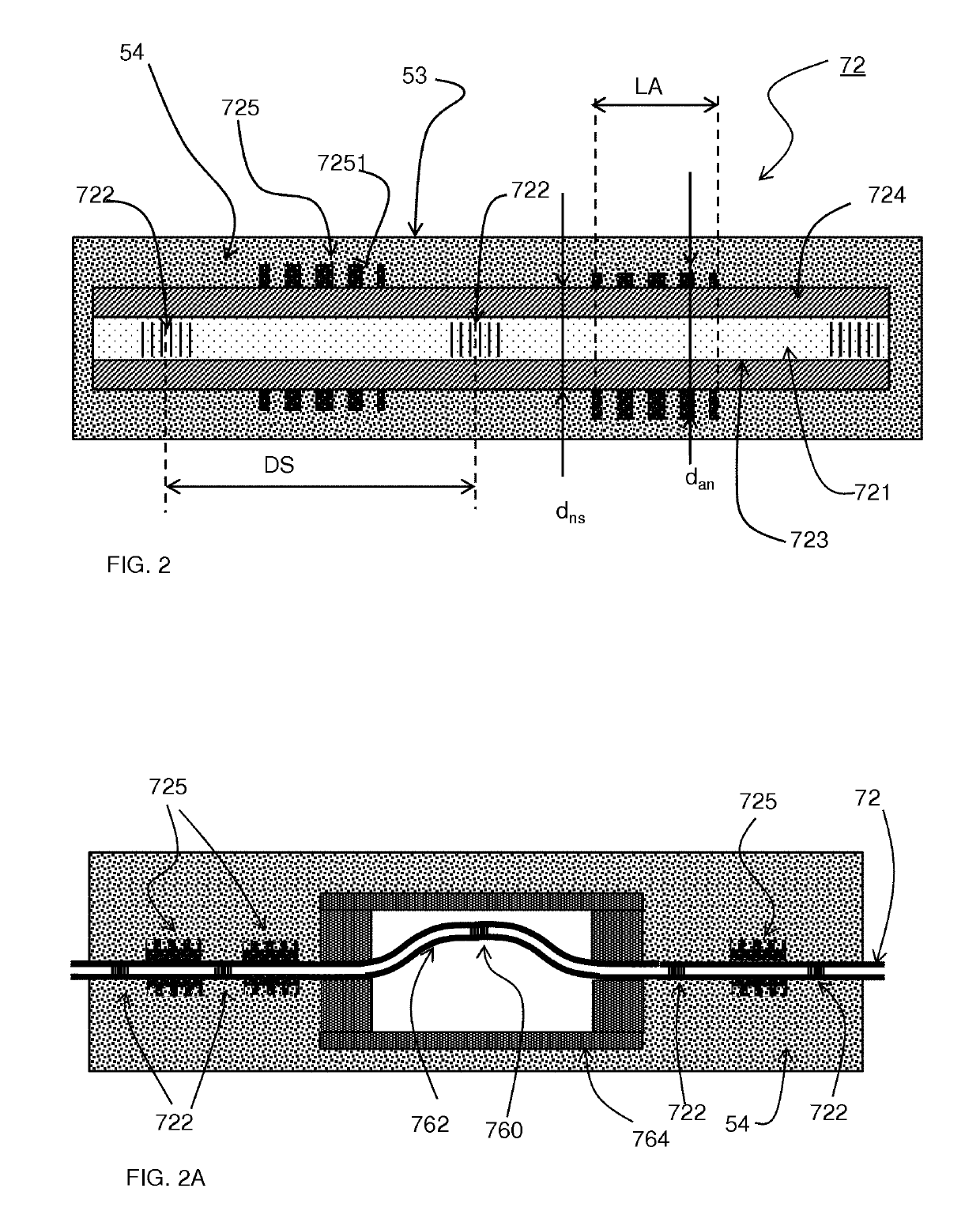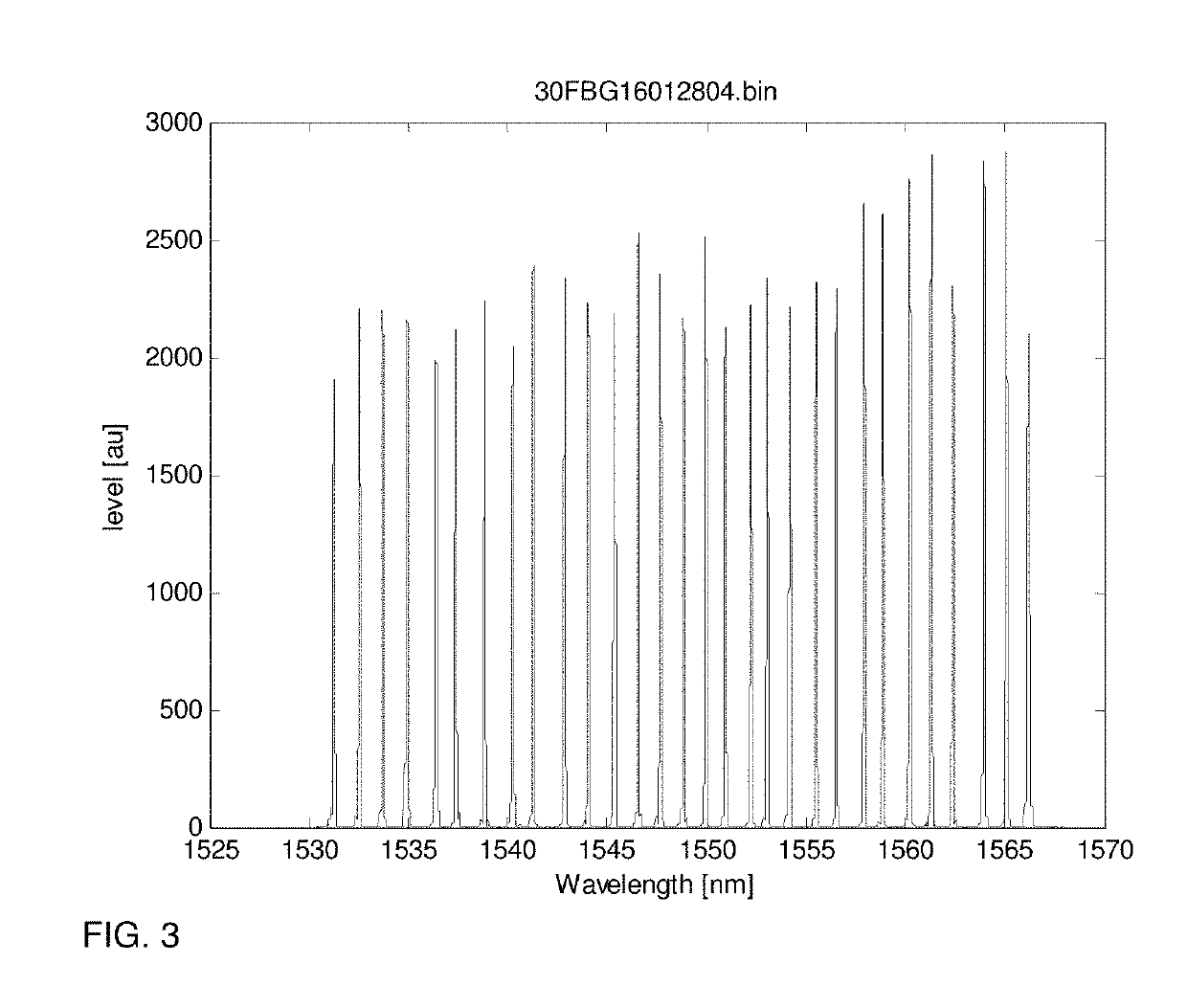Airport monitoring system
a technology for monitoring systems and airfields, applied in aircraft traffic control, measurement devices, instruments, etc., can solve problems such as collisions or near-misses, difficult to monitor and visualize ground traffic monitoring, tight schedule ground traffic, etc., to reduce maintenance and recalibration requirements, reduce the radius of curvature, and increase the life of fiber optics
- Summary
- Abstract
- Description
- Claims
- Application Information
AI Technical Summary
Benefits of technology
Problems solved by technology
Method used
Image
Examples
Embodiment Construction
[0028]FIGS. 1, 1A and 1B schematically show an airport monitoring system 1 for monitoring an airport territory 5. Therein FIG. 1A is a cross-section according to IA-IA in FIG. 1 and FIG. 1B is a cross-section according to IB-IB in FIG. 1. The airport monitoring system comprises an airport territory surface 51 as schematically shown in FIG. 1A that has a traffic infrastructure to support conveyance elements 92 of a vehicle 90. Therewith it allows movements of the vehicle 90 over the airport territory surface 51. In the example shown the vehicle 90 is an aircraft and the conveyance elements 92 are the wheels of its landing gear. Other types of vehicles may be service vehicles, such as fueling vehicles, passenger transport vehicles or cargo transport vehicles. Other examples of conveyance elements are caterpillar tracks or runners of a sleigh. In some cases train like vehicles may be used having train wheels as their conveyance elements and being supported by rails in the airport terri...
PUM
| Property | Measurement | Unit |
|---|---|---|
| depth | aaaaa | aaaaa |
| depth | aaaaa | aaaaa |
| depth | aaaaa | aaaaa |
Abstract
Description
Claims
Application Information
 Login to View More
Login to View More - R&D
- Intellectual Property
- Life Sciences
- Materials
- Tech Scout
- Unparalleled Data Quality
- Higher Quality Content
- 60% Fewer Hallucinations
Browse by: Latest US Patents, China's latest patents, Technical Efficacy Thesaurus, Application Domain, Technology Topic, Popular Technical Reports.
© 2025 PatSnap. All rights reserved.Legal|Privacy policy|Modern Slavery Act Transparency Statement|Sitemap|About US| Contact US: help@patsnap.com



